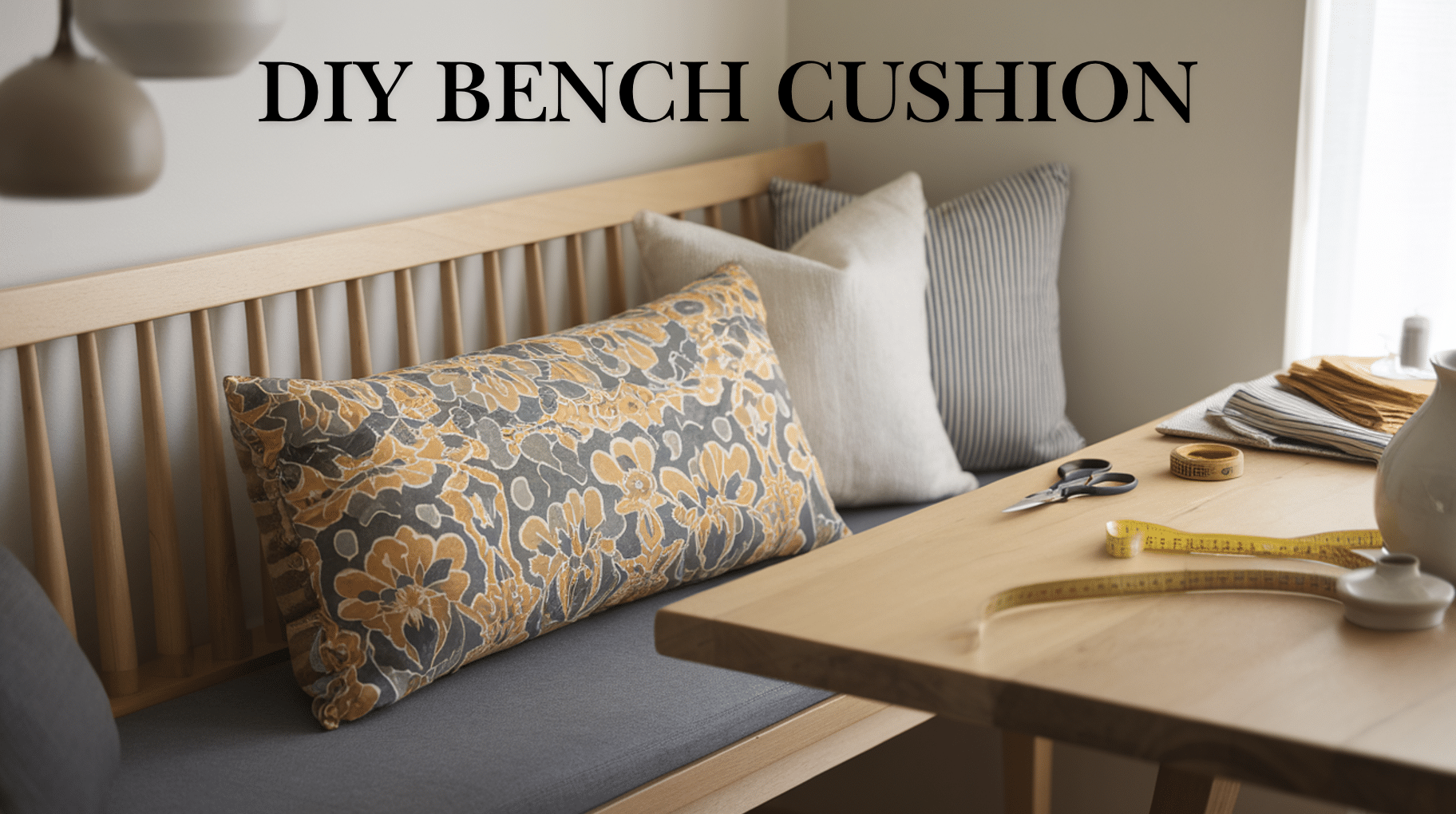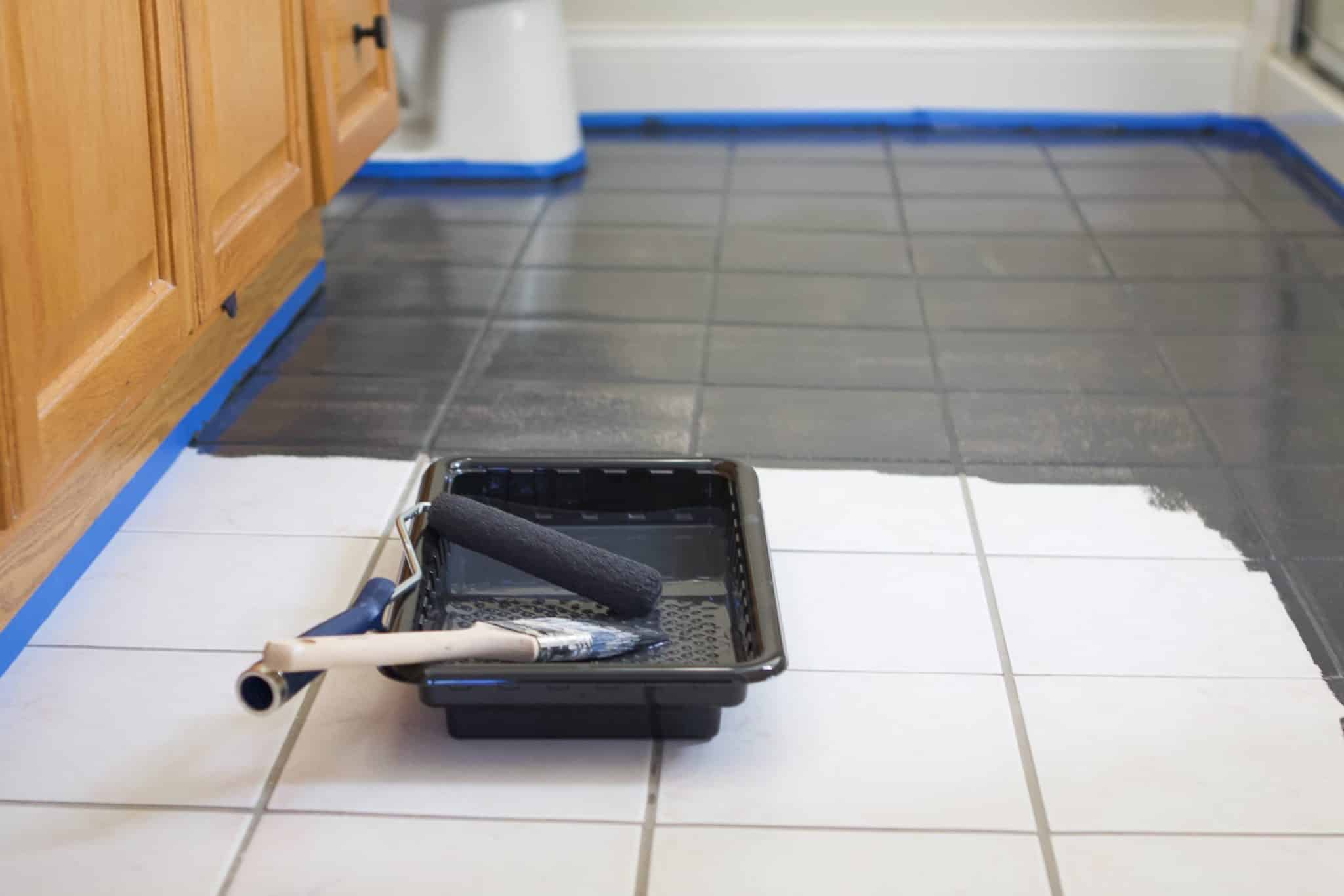DIY Bench Cushions Made Simple: A Complete Tutorial
A custom bench cushion can dramatically upgrade the comfort and aesthetic appeal of any seating area in your home.
Creating your bench cushion allows you to choose the perfect fabric, thickness, and size and helps you save significantly compared to store-bought options.
Many homeowners avoid upholstery projects, believing they require professional skills or specialized equipment.
However, with the right guidance and materials, crafting a beautiful bench cushion is a rewarding project that can be completed in a single afternoon.
Whether upgrading a window seat, refreshing a storage bench, or enhancing your dining nook, this comprehensive guide will help you create a professional-quality cushion that perfectly matches your vision and needs.
Step-By-Step DIY Guide For Bench Cushion

STEP 1: Prepare Your Materials
Gather essential materials: fabric, foam cushions, Velcro, liquid stitching, a measuring tape, and a sewing machine.
Choose a durable fabric that matches your style. Ensure you have the right measurements for the bench, and add extra inches for seam allowance.
STEP 2: Measure and Cut Fabric
Measure the bench’s length, width, and depth, then add an inch for seam allowances. Cut the fabric pieces accordingly, including the top, bottom, sides, front, and back. Double-check all measurements to ensure accuracy.
STEP 3: Plan Fabric Layout
Fold the fabric roll in half to maximize material use. Determine the layout for all pieces, ensuring they fit within the fabric width. This step helps minimize waste and ensures you have enough material for the project.
STEP 4: Sew Velcro Onto Fabric
Attach Velcro strips to the fabric using a straight stitch. Secure the strips on both ends of the cushion cover pieces to allow easy opening and closing. Stick the Velcro first to align it, then sew it for added durability.
STEP 5: Assemble the Cushion Cover
Sew the edges together with the nice sides of the fabric facing inward. Leave a small section unsewn to insert the foam later.
Use a straight stitch and backstitch at corners for reinforcement. Rip small seams at corners to ensure proper fit.
STEP 6: Insert Foam and Finalize
Turn the fabric cover right-side out and insert the foam. Adjust the foam for a snug fit. Sew the remaining open section by hand or use liquid stitching for a seamless look. Smooth out any wrinkles for a polished finish.
STEP 7: Place and Clean the Cushion
Position the finished cushion on the bench. Using a damp cloth, clean any dirt or pet hair from the surface.
Enjoy your customized, cost-effective bench cushion, which adds comfort and style to your space.
Video Tutorial
For More Information, Check out This Video Tutorial By Milani & Wayne.
Finishing Touches

1. Ensuring a Professional Appearance
The key to achieving a professional look lies in the final details of your bench cushion construction.
A well-finished cushion should have crisp corners, even seams, and perfectly aligned patterns that showcase your attention to detail. Take extra time to press all seams firmly and ensure your fabric is pulled taut across all surfaces.
The quality of your finish work dramatically impacts the overall appearance of your bench cushion.
Professional upholsterers recommend double-checking all corners for symmetry and smoothing out any wrinkles or bubbles before considering the project complete.
2. Tips for Durability and Longevity
Creating a durable bench cushion requires careful attention to the foundation layers. High-quality foam wrapped in batting provides the perfect base for long-lasting comfort and shape retention.
The batting layer protects your foam core, preventing premature breakdown and maintaining the cushion’s shape over time.
Temperature and humidity can significantly affect your cushion’s longevity. Store extra materials in a climate-controlled environment and avoid placing finished cushions in direct sunlight whenever possible to prevent fabric fading and foam degradation.
3. Cleaning and Maintenance Advice
Regular maintenance is essential for keeping your bench cushion looking fresh and new. Vacuum the cushion surface weekly using an upholstery attachment to remove dust and debris before they can settle into the fabric.
For deeper cleaning, always test cleaning products on a hidden area first to ensure colorfastness.
Rotating and flipping your cushion periodically helps distribute wear evenly across the surface. This simple practice can significantly extend the life of your cushion and maintain its original shape and comfort level.
Troubleshooting Common Issues In Bench Cushions

Fixing Misaligned Fabric Patterns
Pattern alignment issues can be particularly noticeable on bench cushions, especially with striped or geometric fabrics.
When you notice misalignment, it’s often possible to partially deconstruct the problem area and realign the fabric before restapling or resewing.
Properly aligning patterns before cutting your fabric can prevent most alignment issues. Always work with your fabric on a flat surface and use alignment marks to ensure patterns match across seams.
Adjusting Tight or Loose Covers
A perfect fit is crucial for a professional-looking bench cushion. If your cover feels too tight, consider slightly removing some batting or trimming foam edges to reduce bulk.
Loose covers can often be corrected by adding an extra layer of batting or adjusting the seam allowance.
Dealing with Foam Irregularities
Foam irregularities can create visible lumps or dips in your finished cushion. Careful cutting technique using an electric carving knife can help achieve smoother foam edges.
When irregularities occur, strategically placing additional batting can help smooth out problem areas.
Budget-Friendly Tips

1. Sourcing Affordable Materials
Quality materials don’t always require premium prices. Watch for sales at fabric stores and consider ordering foam in bulk if you have multiple projects planned.
Many upholstery suppliers offer significant discounts on larger orders or remnant pieces.
Online marketplaces often have better prices than brick-and-mortar stores for basic supplies like batting and foam.
Join local crafting groups or online forums to learn about sales and share bulk purchases with other DIY enthusiasts.
2. Upcycling Fabrics and Foam
Consider repurposing materials from existing furniture or decor items. Old memory foam mattress toppers can be cut down to create comfortable bench cushions, while durable curtains or tablecloths might provide the perfect fabric for your project.
Thrift stores and estate sales often yield high-quality upholstery fabric at a fraction of retail prices. Look for items with large sections of undamaged fabric that can be repurposed for your cushion project.
3. Cost Comparisons Between DIY and Store-Bought Cushions
Creating your bench cushion typically costs 40-60% less than purchasing a comparable custom-made piece. While professional cushions might start at $200-300, DIY versions can be completed for $75-100 using quality materials.
The real value extends beyond initial cost savings. DIY cushions allow complete control over materials, design, and quality while developing valuable skills that can be applied to future projects.
The Bottom Line
Creating your bench cushion transforms more than just furniture – it builds valuable skills and confidence in DIY projects.
Following the guidelines above will help you craft a professional-quality cushion that perfectly matches your vision while saving significantly compared to store-bought options.
The satisfaction of completing your upholstery project, combined with the freedom of customization, makes this endeavor truly rewarding.
Remember, whether you’re a beginner or an experienced crafter, each project improves your expertise.
Your handmade cushion will enhance your space and showcase your dedication to quality craftsmanship.
Frequently Asked Questions (FAQs)
What Is the Best Fabric for a Bench Cushion?
Durable fabrics like canvas, twill, or outdoor-grade polyester are best. They resist wear and tear, are easy to clean, and provide long-lasting comfort for everyday use.
How Thick Should Foam Be for a Bench Cushion?
Foam thickness of 2–3 inches is ideal for most bench cushions. It provides sufficient comfort and support without making the cushion feel too bulky or stiff.
How Can I Make Bench Seats More Comfortable?
Add thick foam cushions, choose soft yet durable fabric, and incorporate padding with a slight contour. Use Velcro to secure cushions and prevent shifting during use.







